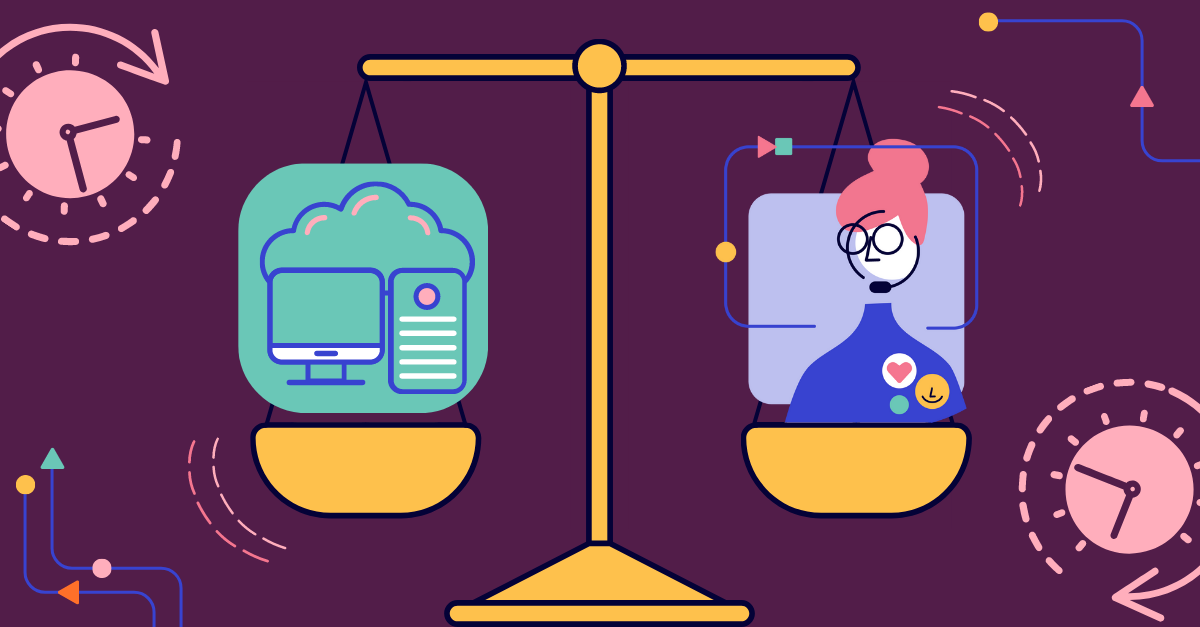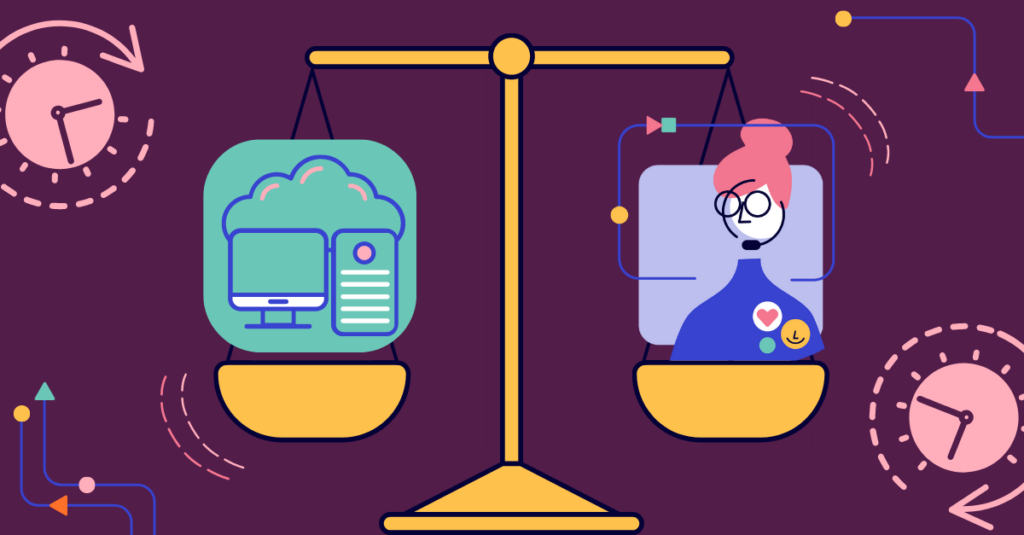
Machine translation has come a long way since its inception. In 2021, the market size of machine translation software was valued at $800 million, which is now expected to grow at over 30% CAGR through 2030. In fact, global tech giants like Microsoft and Google and fintech companies like PayPal are investing millions of dollars in machine translation technology, driving it forward with their latest artificial intelligence and machine learning breakthroughs.
Keeping in mind its rapid growth and popularity in the tech and fintech sectors, this is a good time to explore what machine translation is, how it is different from human translation and interpretation, and how the future and potential of translating software will shape ours.
What is machine translation?
Machine translation involves the use of artificial intelligence to automatically and instantly translate text from one language to another without any human intervention. For example, a tech company may use machine translation systems to deliver localized in-app experiences or translate its FAQs and technical descriptions into multiple languages.
Modern machine translation goes beyond simply translating text word-to-word in order to convey the full meaning of it in another language. It explores all textual elements and distinguishes how the words impact one another. Some other benefits of machine translation software are:
-
Speed and accuracy: You get an almost immediate and accurate translation output, which accelerates the process.
-
Affordability: Your translation projects require less staff and less time which saves money.
-
Scalability: Machine translation software can handle massive amounts of text.
-
Flexibility: A single tool can translate text into multiple languages.
-
User-friendliness: Anyone can use it, including businesses, language professionals, and everyday users.
Translation vs. interpretation
Many people are often confused between translation and interpretation, using the terms interchangeably. However, both are quite different processes.
-
Translation deals with written text, whereas interpretation allows users to hear different language versions of the same spoken language in real time.
-
Translation occurs over a period of time with extensive access to external resources, while interpretation happens in a live setting.
Machine translation vs. human translation
Machine translation services use artificial intelligence to translate text across languages. On the other hand, human translation involves one or multiple translators or linguists translating the manuscript manually. Most machine translation software use neural networks, modeled on those found in the human brain, to form sentences in the target language.
In terms of cost, machine translations are generally more cost-effective than human translations. On average, professional translators typically charge around $0.10 – $0.50 per word. So a 10,000-word translation project would cost you around $1,000 – $5,000 even if you’re hiring a freelance translator instead of working with an agency. On the other hand, the paid version of Google Translate, called Google Cloud Translate, charges around $20 per million characters.
However, there are certain areas of the localization process where machine translation tools alone aren’t adequate. For example, most machine translation services fail to understand context, jokes, and cultural nuances. Computer-assisted translations of technical descriptions are often overly complex, which can make it difficult for users to understand.
In addition, there are many kinds of translation, such as marketing content, that involve rewording or completely altering the message to make it work for the new audience. This is something that computer-assisted translation management systems can’t do yet, so we still need human involvement in these cases.
The best translation systems use a mix of machine and human translation processes. Unbabel takes this even further by providing a quality estimation of the translated text. This tool quickly highlights areas that call for more proofreading. This helps streamline the translation work and also enhances its quality.
The future of machine translation
The big question is: What is the future of translation? Are machines going to replace human translators?
While machine translation may not be able to supersede human translation, it has many practical applications in the right context. That’s one reason why the machine translation industry is growing exponentially these days. In the future, we expect machine translation engines to improve in the following major areas.
1. Edit score
The edit score shows the percentage of the workload that a human translator experiences when post-editing a text translated by machines. Currently, the translation industry’s average edit score is about 20-40%.
With the growing use of artificial intelligence in localization, as well as the incessant improvement of translation software, we believe machine translations will require considerably less editing down the road, which will decrease the overall edit score.
2. Speech-to-text accuracy
In the future, we can expect significant improvements in speech-to-text translation. Modern translation software won’t stop at text-to-text translation. We believe speech-to-text translation and speech recognition will become increasingly visible in the localization industry. For example, Microsoft has reportedly invested $10 billion in OpenAI, the startup behind ChatGPT and Whisper API that supports speech-to-text transcription and translation.
3. Focus on minority languages
According to a study, Google Translate can translate English text with an accuracy rate of 87% for Spanish, 64% for French, and 58% for Chinese. As such, tech and fintech companies can’t consistently rely on machine translation if they’re looking to translate content into any of these languages.
Moving forward, machine translation algorithms are likely to support more minority languages like Burmese, Mongol, Arabic, or Gujarati. In turn, they will become more inclusive and offer better translation quality for lesser-known languages.
Machine translation vs. human translation: What should you choose?
While machine translation still has a long way to go in order to match the accuracy of human translation, we can’t deny its importance in terms of cost, speed, flexibility, and scalability. It’s a symbiotic relationship between man and machine.
Tech and fintech businesses can benefit immensely from including machine translation in the translation workflow. For example, Microsoft saved 51% in multilingual support with machine translation. The key is to use it intelligently. Instead of using machine translation as a standalone translation service, look for a system that integrates a human translator inside the process before submitting the final text.
Simplify the process of translation with Unbabel
At Unbabel, we understand that machine translation may not replace human translation any time soon. That’s why our cost-effective LangOps platform combines the best blend of machine and human translation so tech and fintech businesses can deliver a consistent, fast multilingual customer experience, expand to new markets, and build trust across the globe. We offer full-stack translation for tech products — from digital ads to downloads, to in-app, to support.
Unbabel uses powerful machine learning enhancement tools to give ever-more accurate assessments. Our award-winning Quality Estimation system guarantees that if a translation isn’t good to go, our community of 55,000 editors reviews it and corrects the mistakes quickly, providing a high-quality translation to our customers.
We customize our translation engine according to your tech company, ensuring natural, on-brand translation in every language. Plus, a layer of human fine-tuning delivers the kind of personalization that instantly establishes a connection with your customers. Request a demo today.












